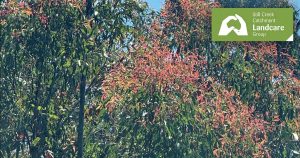Like many institutions in Australia, the roots of the Uniting Church in the Hills District can be traced back to English traditions. The local Uniting Church began life as a Methodist-Wesleyan congregation, exported by settlers from Cornwall where that denomination had been well established for a century.
The Methodist-Wesleyan congregation began thanks to the ministry of John and Charles Wesley in the middle of the eighteenth century. In 1743 John and Charles Wesley, part of a broader evangelical movement that had drifted away from the orthodox Church of England, began a series of visits to Cornwall. The people there had moved from land and farm based work to industrial jobs, and the preaching of the Wesley brothers appealed greatly to them, and soon there was a thriving church network in the district.
Cornish Methodism was eventually carried overseas, and as settlers arrived in Australia hoping for a new and better life, the Methodist church came with it. The first Methodist- Wesleyan church services were held in the Dural district in about 1846, in a slab building with a shingle roof, in front of the home of Mr. G. T. Hunt. This property is believed to be about half a mile north of the Old Northern Road- Galston Road intersection.
There were around 15 people in that first congregation, but it eventually grew to the extent that the original church building was too small. Another church large enough to hold 100 people was built of weatherboard material just south of the Galston Road intersection, on land that Mr Hunt is believed to have donated. This church was opened on 8th January, 1879.
Later a new larger and more ornate church was built in front of the weatherboard building. This was opened in 1887 and could take up to 200 people. The weatherboard structure served as a Sunday School and Supper Room. The original church at Mr. Hunt’s property was later moved and re-erected behind the hall of 1879 and the Church building of 1887 in order to house a horse and sulky.
Originally the Dural Parish belonged to the Parramatta Circuit. In 1882 a division was made, and Dural became an outpost of the Ryde circuit, reaching from Glenorie to Gladesville. (Dural became a separate entity in the next division, which took place in 1910.)
The minister used to come up from Ryde on horseback and members of the congregation were required to provide him with lunch. Unmarried ministers were in charge of this outpost until 1917, and happily, a number of the unattached young ministers ended up married to worthy young ladies of this district.
In 1917, the first married minister was appointed, and it became necessary to plan for the building of a parsonage, suitable to house a family. The parsonage was designed by an architect and built on the elevated site adjoining the church in 1922. The church property was a graceful addition to the little village at that time.
The parish grew steadily over the years, with small congregations being formed at Arcadia in 1894 and Glenorie in 1899. A small weatherboard church was erected on the corner of Geelans Road, Arcadia in 1894 on land donated for the purpose of protestant worship. This church was shared by Methodists and Church of England worshipers until 1907, when St. Columbs Church of England, Arcadia was opened.
From 1910 the Dural Parish Circuit comprised Arcadia, Glenorie, Dural and West Pennant Hills. West Pennant Hills is The Uniting Church Cherrybrook today.
More of our story next month.
Sources:
1. Information from a book ISBN 09596809 6 9.
2. A Cloud of Witnesses at Dural by Trevor John Knight printed 1979.
3. Dural District Historical Society 21st Anniversary Publication by June Roughley in 2005.
4. Research through Trove.
5. Family collection of Mrs. Freda Halliday and more recent photos were taken by Ken Turnidge.







